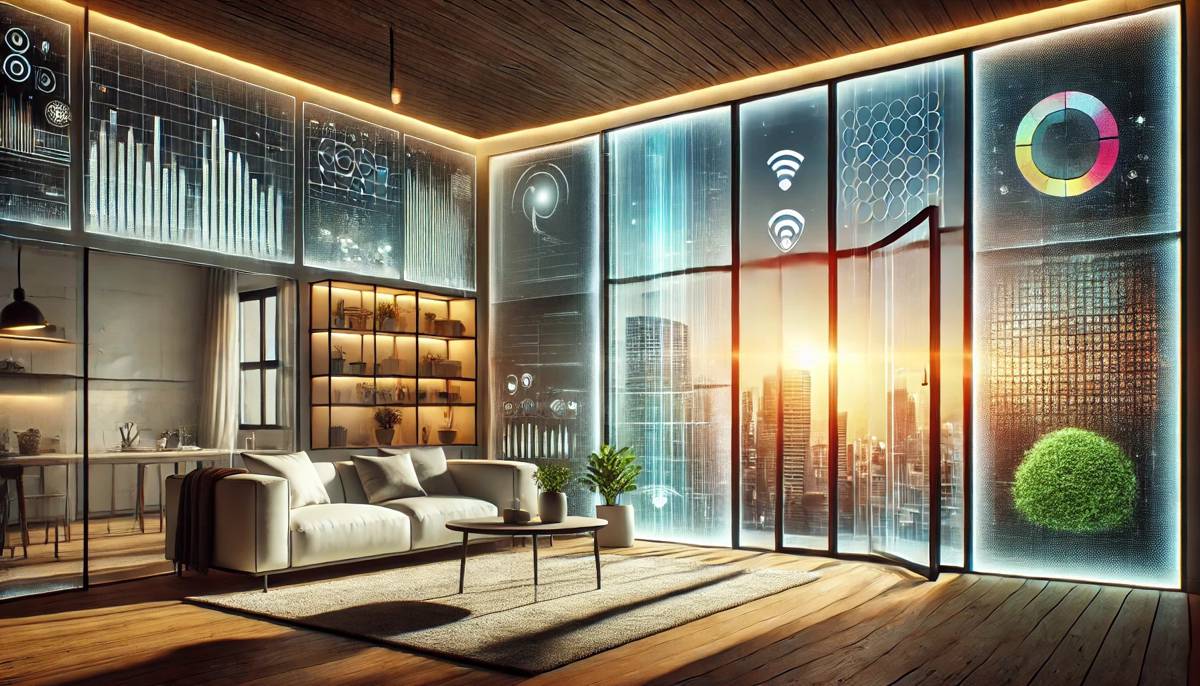A New Dawn for Healthier Indoor Environments with Multispectral Smart Windows
Windows, those unassuming frames that bridge our indoor sanctuaries with the bustling world outside, have always been about more than just letting in the light. But as we march towards smarter, more connected spaces, the humble window is evolving. Beyond mere aesthetics, windows are now tasked with shielding us from harmful light waves and electromagnetic (EM) radiation, which can sneak into our homes and offices, often unnoticed. Managing these threats, however, demands a blend of advanced materials and technologies—something traditional windows just aren’t equipped to handle.
Recent research led by Professor Jiaqi Zhu from Infrared Films and Crystal, published in the journal Light: Science & Applications, is set to change that narrative. Titled “Multispectral Smart Window: Dynamic Light Modulation and Electromagnetic Microwave Shielding,” this study unveils a ground-breaking multispectral smart window that does more than regulate visible light—it also blocks microwave signals.
The innovation lies in its sophisticated structure, comprising a core liquid crystal mixture enriched with negative liquid crystals, ionic surfactants, and dichroic dyes, sandwiched between vertically aligned polyimide layers and indium tin oxide (ITO) film, all encased within a glass substrate. It’s like putting a high-tech armour on your windows, turning them into defenders of indoor health and comfort.
Breaking Down the Science: How It Works
So, how does this cutting-edge window work? Well, it’s all about control. By combining dynamic scattering and liquid crystal doping, the window can fine-tune its transmittance and scattering properties, effectively managing the amount of light and heat that passes through. This smart modulation isn’t just about keeping rooms cooler or saving on energy costs—it’s about privacy too. You can enjoy natural light without compromising on your personal space, thanks to this advanced light control mechanism.
But it’s not just light that’s under control here. One of the critical innovations is the incorporation of ITO film, which, when optimised to the right thickness, serves as a shield against microwave radiation. This is particularly significant in an era dominated by 5G networks, where EM exposure is a growing concern. By blocking these waves without affecting optical performance, these smart windows could play a pivotal role in reducing potential health risks linked to electromagnetic pollution.
Outperforming Existing Technologies
The study makes it clear that this multispectral smart window isn’t just another tweak on existing technology—it’s a leap forward. When compared to current electronically controlled smart windows and other transparent structures designed for microwave shielding, this new approach stands out in five critical areas: response time, transmittance adjustment range, haze adjustment range, driving voltage, and optical modulation mode. It’s not merely about blocking light or EM waves; it’s about doing it faster, more efficiently, and more effectively.
What really sets this window apart is its performance across various shielding bands, including S, C, X, and Ku bands, which are vital for modern communication technologies. Compared to other transparent electromagnetic shielding materials on the market, this innovation significantly outperforms, delivering enhanced shielding effects that far exceed those of conventional PDLC (polymer-dispersed liquid crystal) materials. For those in the know, that’s like trading in your old flip phone for the latest smartphone—it’s a total game-changer.
A Holistic Approach to Environmental Control
Beyond its technical prowess, what makes this multispectral smart window truly impressive is its holistic approach to managing both the solar spectrum and the microwave spectrum. This dual capability is achieved through a clever design that allows the window to transition seamlessly between transparent, absorbing, and haze states. Think of it as a chameleon for your building’s façade, constantly adapting to optimise indoor conditions while safeguarding occupants from unseen threats.
The research delves into the nuts and bolts of this transformation, including an innovative ion movement model and dielectric constant operation strategy. By fine-tuning the ratio of CTAB (cetyltrimethylammonium bromide) and SDS (sodium dodecyl sulfate), the team achieved a lower optimal driving frequency of around 300Hz, which reduces the risk of electrical breakdown that often plagues high-frequency systems. Moreover, by carefully optimising the thickness of the transparent conductive film, the window delivers a superior broadband electromagnetic shielding effect of 30.9dB, all without compromising on visual clarity. In simpler terms, you get maximum protection with minimal downside—exactly what you want in a smart window.
Implications for the Future of Building Design
So, what does this mean for the future of construction and building design? For starters, it opens up new possibilities for integrating smart technologies directly into building façades, turning windows into multi-functional components that contribute to energy efficiency, privacy, and health. Architects and designers can now think beyond traditional materials and consider windows as active, intelligent systems that play a vital role in the overall performance of a building.
This could have far-reaching implications for industries ranging from commercial real estate to healthcare, where control over light and EM exposure can directly impact occupant well-being. In offices, for example, reducing glare while blocking harmful radiation could enhance productivity and comfort. In hospitals, shielding sensitive equipment from electromagnetic interference could improve both patient outcomes and staff working conditions. And for homeowners, the ability to balance natural light with privacy and EM protection offers a compelling reason to rethink what’s possible with their living spaces.
Towards a Smarter, Healthier Future
Evolving smart window technologies like the one spearheaded by Professor Zhu and his team represent a significant stride towards healthier, more responsive indoor environments. As our understanding of light and electromagnetic waves grows, so too does our ability to mitigate their impacts through intelligent design. Multispectral smart windows aren’t just about looking good or saving energy—they’re about creating spaces that work with us, not against us.
With continued research and development, it’s likely we’ll see these technologies become mainstream, transforming the way we think about the role of windows in our everyday lives. From shielding us against the invisible perils of modern technology to creating adaptable, comfortable living and working spaces, the future of smart windows looks bright—and a whole lot safer.




















